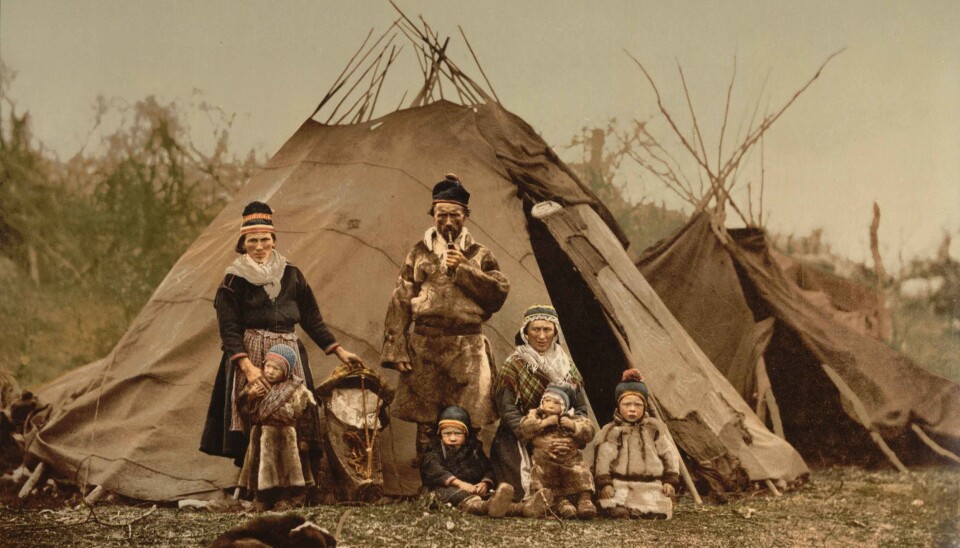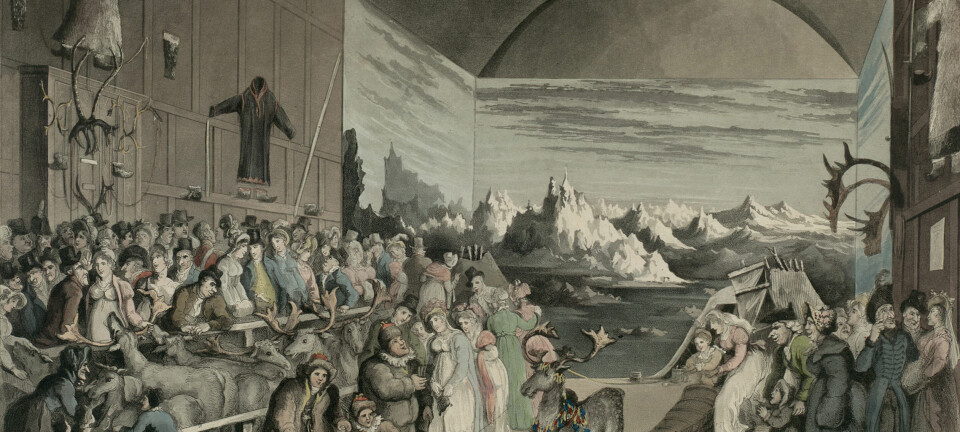
Children know little about the indigenous Samis
The Norwegian State has taken little initiative toward ensuring that children learn about the Sami people, although it is legally obliged to do so.
Denne artikkelen er over ti år gammel og kan inneholde utdatert informasjon.
This negligence has been revealed by a study of 9th graders and what they are taught about the Sami.
The study also revealed that the vast majority of teachers who were questioned said they had learned little about the Samis [formerly known as Laplanders] at teachers’ college and in their supplementary education.
As regards their pupils, hardly any had learned what they should in conformity with the law.
“The level of knowledge about the Norwegian indigenes is deplorable," says Hadi Lile at the Norwegian Centre for Human Rights. He recently received his doctoral degree on the subject at the University of Oslo.

He says that the most important part of Sami history has not been included in the nationwide school reform dubbed the Knowledge Promotion.
"How can we achieve our educational goal regarding respect and understanding of the country’s indigenous population when pupils aren’t taught the history of ‘Norwegianizing’ – a state-run racist educational policy that lasted 112 years?” asks Lile.
Learning to respect other people
Lile’s point of departure is the UN Convention on the Rights of the Child, which lists respect and understanding of indigenous peoples as one of the goals in the children’s education. He accumulated data from 15 schools in his study and carried out surveys among teachers and pupils.
He started his study by interpreting the law, more specifically the UN Convention of the Rights of the Child’s article 29 (see fact box). Upon signing the convention, Norway is obliged to adhere to it.
Lile rephrased the message of the legal text into sociological questions to reveal whether the law has been implemented and functions as it should.
“A fundamental goal of education is learning to respect other people. Because article 29 specifically mentions indigenous peoples, I’ve chosen to study what children are learning about the Sami. However, article 29 sets targets for education on a broad scale. My focus on what they should learn about Sami is just an example.”
He says that one of the educational goals is to maximize children’s abilities for comprehending society, and among other things this embraces a free society based on respect for human rights.
Low level of knowledge, also in the north
In the study 817 pupils answered a questionnaire about what they know about Samis, and 30 pupils were also interviewed.
The schools were geographically spread with five schools in the northernmost county of Finnmark and three schools in administrational areas where the Sami language is officially in use. In addition he used two schools in Mid-Norway, two in Oslo and two in south-east Norway.
“Lots of the pupils I interviewed knew more about other indigenous peoples than they did about Norway’s own. Of course there are kids who are being taught some of the history of the Samis, but what they learn is little in line with the UN’s child convention.
“The level of knowledge was quite low, even in Finnmark. That greatly surprised me, that even those who live in Sami areas could be so ignorant. On the up-side, lots of teachers solicited more expertise,” says Lile.
Negative attitudes toward the Samis
But he also discovered that many of the teachers in the far north have negative attitudes toward the Samis.
“About half the teachers in Finnmark, outside the Sami administration areas, thought that Sami are very demanding and that they gripe too much. This doesn’t exactly conform to the goals of teaching children to develop a respect for Sami rights," says Lile.
All of the 190 teachers who answered the survey gave the wrong answer to the question of whether the Sami comprise a nation of their own.
“Teachers should learn more and we need better textbooks. If the Ministry of Education and Research wants to continue to ignore the UN Convention on the Rights of the Child the Norwegian Government, with a mandate from the Parliament should apply for an exemption from the convention it has ratified,” says Lile.
No overall plan on teaching about the Sami
The University of Tromsø (UiT) has a special responsibility for Sami education and it also offers degrees in teaching. Associate Professor Bent Ove Andreassen is responsible for the university’s courses training students in the subject of religion and life philosophy.
He explains that there is no overall plan about how they work on teaching about the Sami. It’s up to the individual teacher to decide how much emphasis to give to Sami issues.
"A lot could and should be done differently. I too see that the students’ knowledge about Sami is insufficient, and given that we have a special responsibility in this area, we should be doing much more to rectify that.
“We certainly could have a more lucid strategy on the departmental level. Our problem is that we have so much on the curriculum. Sami issues are an appendage and are often given cursory treatment,” says Andreassen.
In 2007 the Norwegian Directorate for Education and Training issued a pamphlet – Gávnos – about the Sami content of the Knowledge Promotion campaign for all teachers in Norway.
“Gávnos is a tutorial, it hasn’t been made mandatory,” explains Andreassen.
Will teach Sami culture
The Nord-Trøndelag University College has a certain responsibility for the cultivation of the South Sami language and it too educates teachers. In Lile’s study the schools in Trøndelag had the most positive attitude toward the Sami.
“Our goal is to give our students more expertise about Sami culture than students training to be teachers get at other colleges. Everything from joik - the chanting songs - to Sami history. But they still learn too little. After Christmas we have it scheduled as a subject for students training to become pre-school teachers,” says Rolf Disen.
Disen supervises the reporting to the board of the Nord-Trøndelag University College about implementation of its responsibilities in South Sami educational matters.
“This has to be better clarified in our education of elementary teachers. The teaching can easily be too fragmented as regards Sami themes. The college board has decided that we should get a better grip on our responsibilities as regards teaching about Samis," says Disen.
He reveals that the educational institutions that have been given such special responsibilities signed a collaboration agreement last March, in which one of the goals was bolstering the education of teachers about Sami matters.
“We also have a strategy for following up recruitments regarding Sami issues. We’re looking for Sami themes that would be good to add to our curriculum for teachers,” says Disen.
Reference:
Hadi Khosravi Lile, The UN Convention on the Rights of the Child Article 29 (1) on the Purpose of Education: Sociology of Law Study on What Children in Norway Learn About the Sami People.”, PhD thesis, Norwegian Centre for Human Rights, University of Oslo, November 2011
--------------------------------
Read this article in Norwegian at forskning.no
Translated by: Glenn Ostling
































